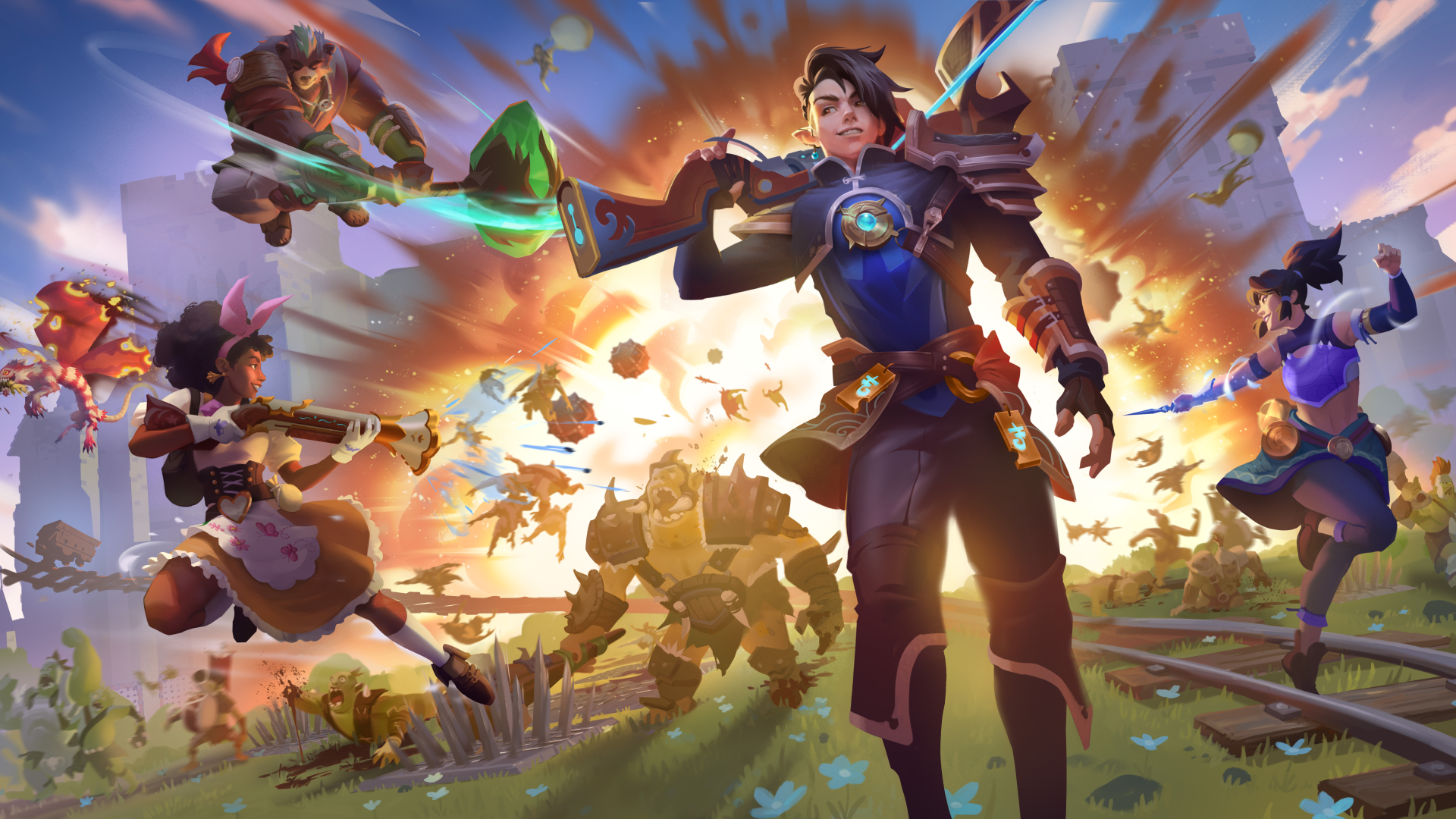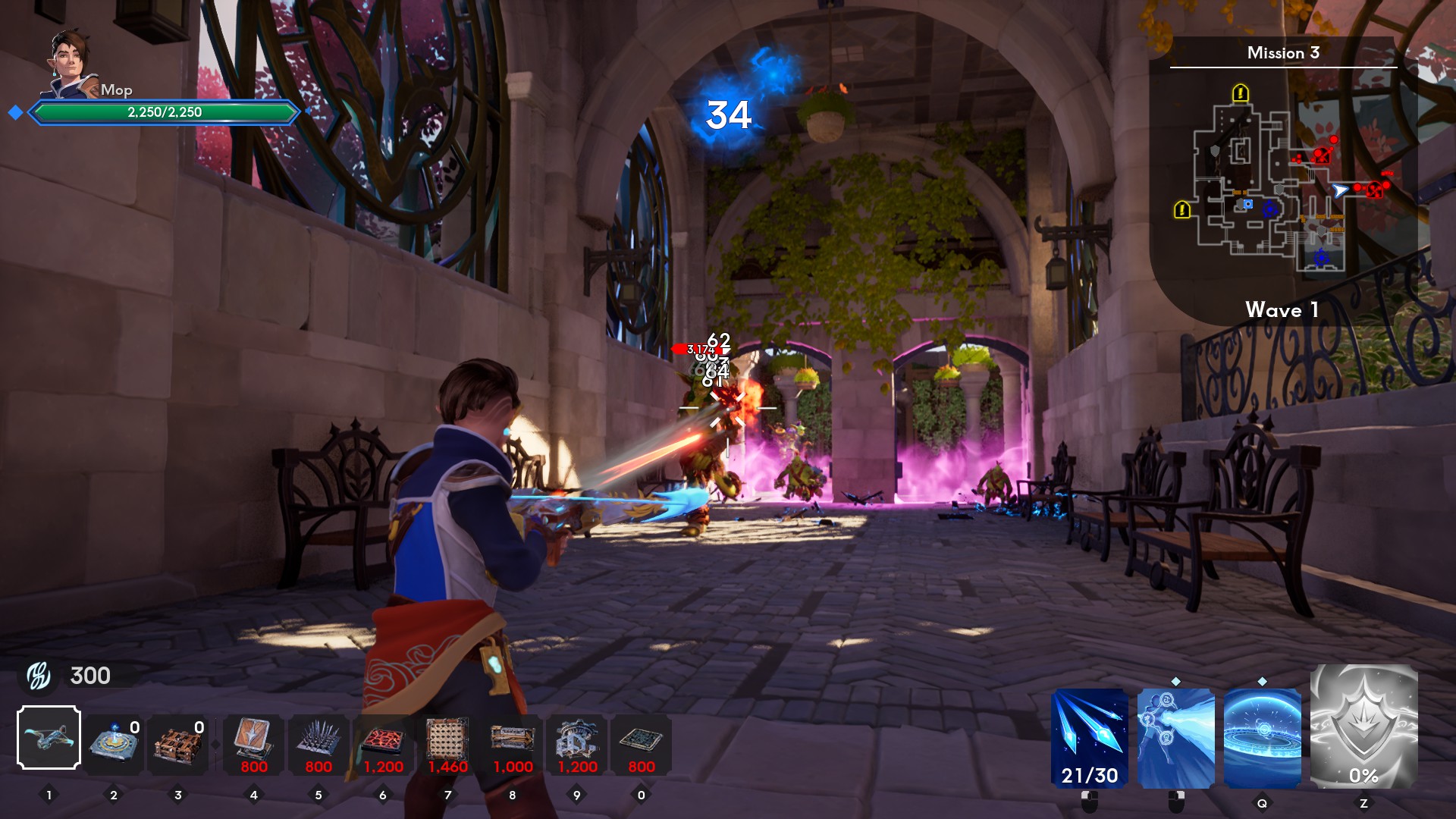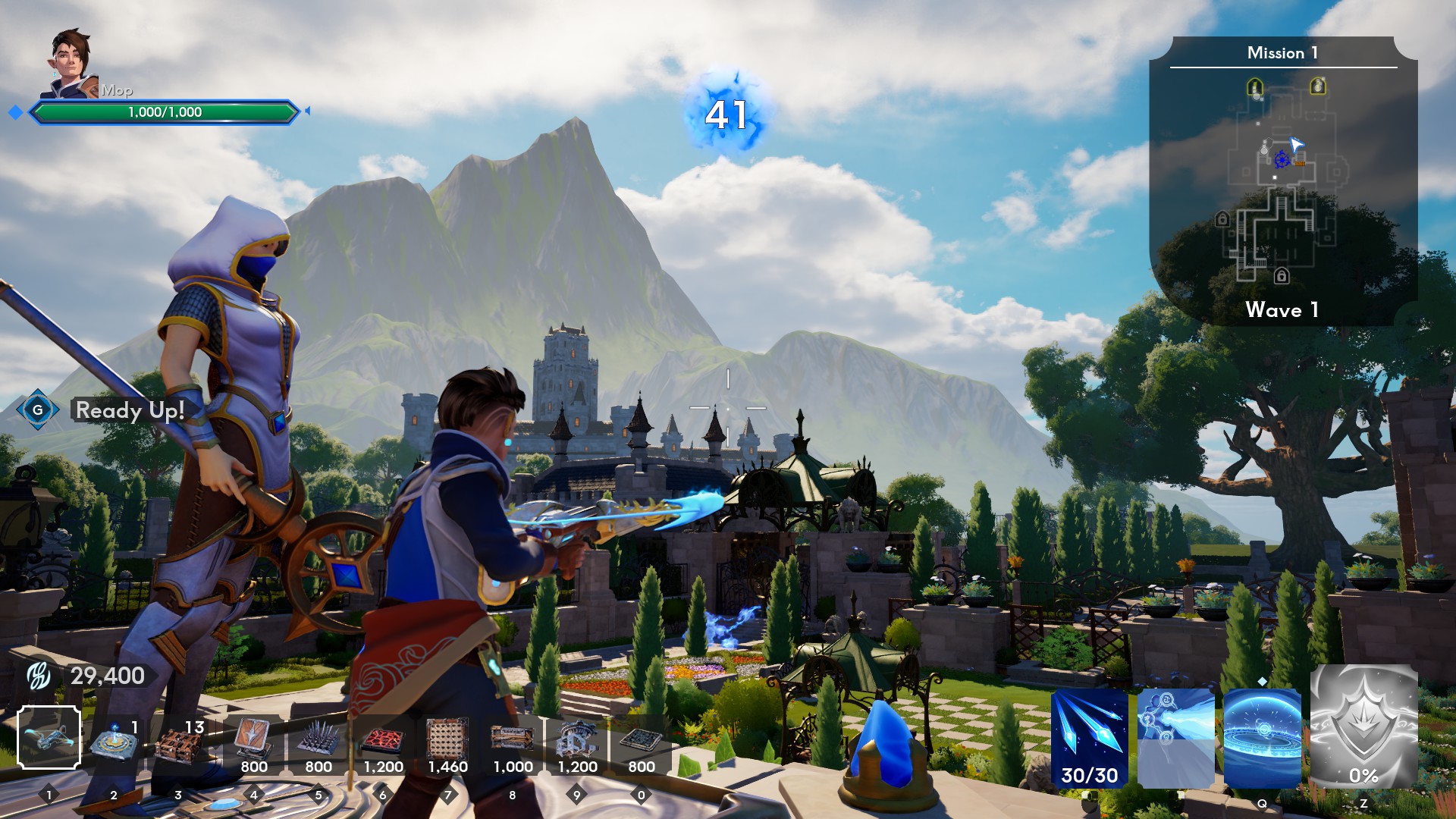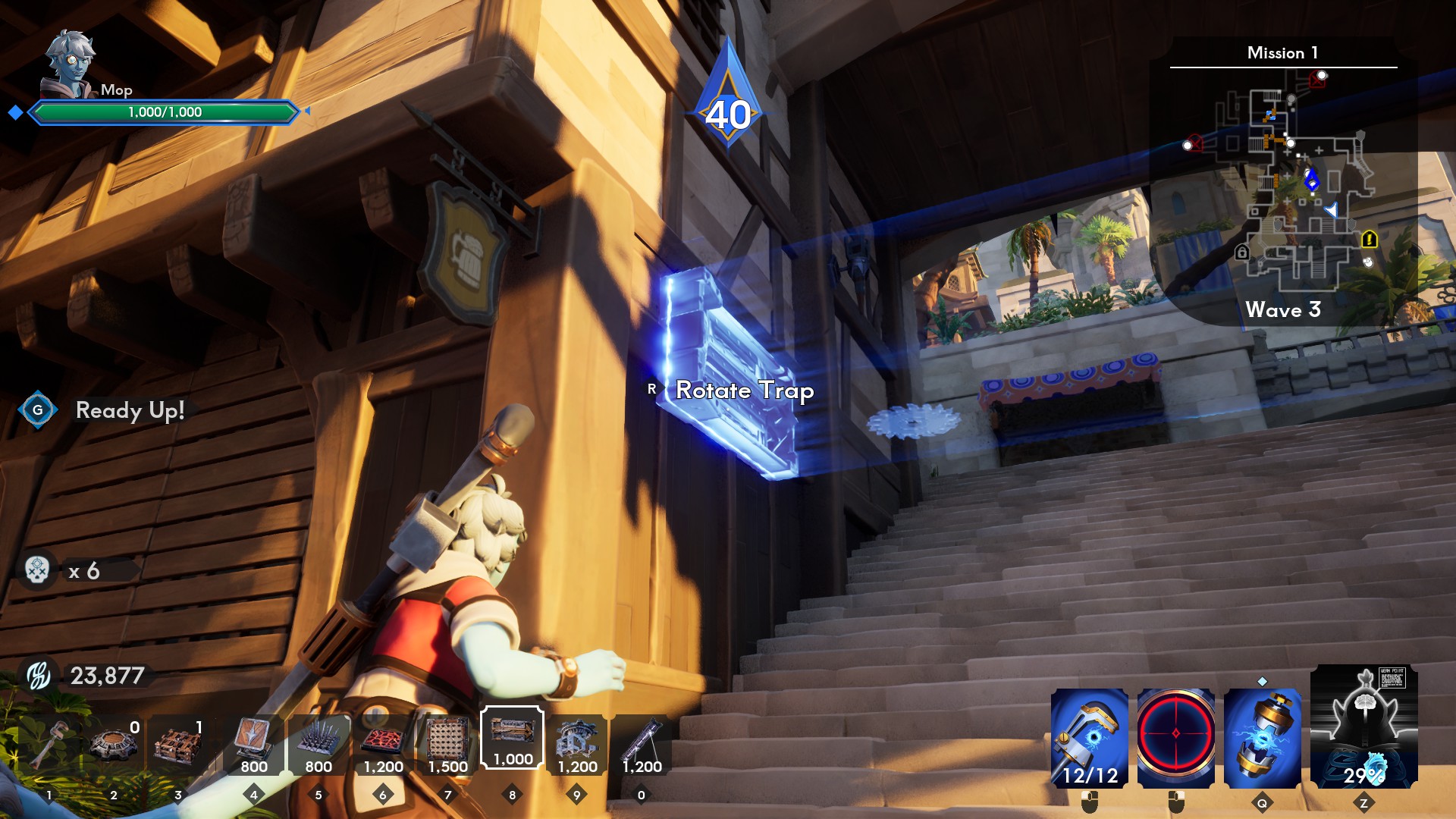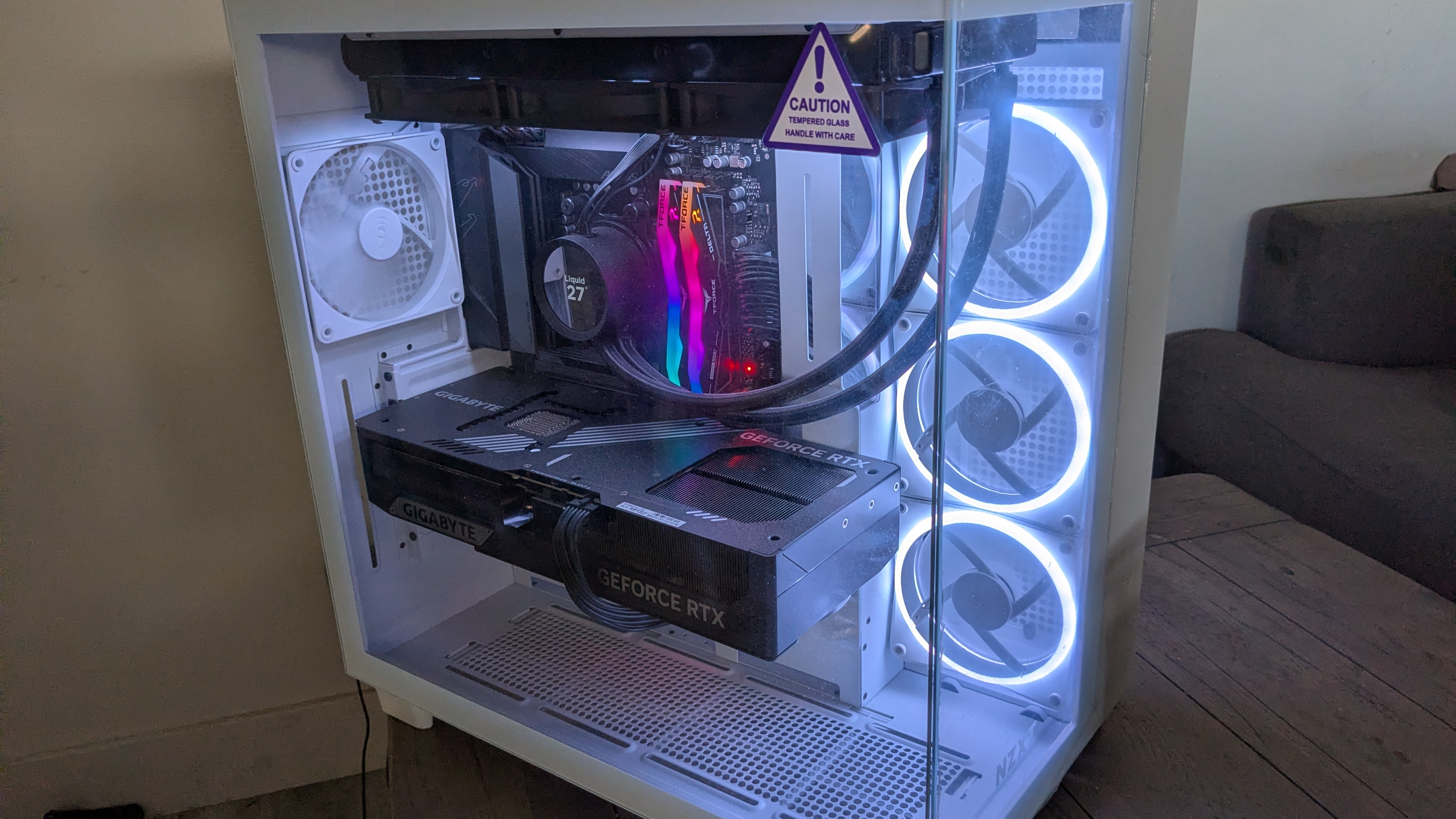Our Verdict
Orcs Must Die: Deathtrap retains the frenzied fun of its predecessors despite a mixed bag of format changes.
PC Gamer's got your back
What is it? A co-op roguelite tower defense/third-person shooter hybrid.
Release date: January 28, 2025
Developer: Robot Entertainment
Publisher: Robot Entertainment
Reviewed on: Windows 11, NVIDIA GeForce RTX 3060 Ti, Intel Core i7-12700F, 16GB RAM
Steam Deck: Playable
Multiplayer?: Yes
Link: Official site
If it ain’t broke, don’t fix it. That mantra could apply to horde shooters in general—demonstrating through games like Helldivers 2 and Deep Rock Galactic that mowing down thousands of something will always be cool—as easily as it could apply to Orcs Must Die, a series which spent the last decade content to reprise its novel blend of tower defense and third person shooting with steely consistency. Trends come and go, industries shift and change, but orcs? Orcs must die, and that’s just not the sort of thing you mess with.
Until now, anyway. The series has seen an overhaul in Deathtrap as it reaches for that holy grail of infinite roguelike replayability. In past entries, Orcs Must Die had static level layouts; over the course of the game, you’d master an expanding toolset of traps and weapons as the game’s raving hordes escalated in quality, quantity, and complexity. If you lost a level, you replayed it until you got it right, and eventually could set up such an efficient factory line of firepower that no amount of orcs could successfully pile through.
In fact, those most potent of tower defense setups—affectionately called killboxes by the community—are as fun as they are obstructive to replayability. For a horde shooter, Orcs Must Die has always been a bit too easy to solve, reach a point where nothing can touch you, and dispense with any challenge. Deathtrap’s sweeping changes feel angled to prevent that issue by ensuring any and all plans can go wrong; a sea change that sometimes leads to an exhilarating sense of panic, and sometimes leaves the game feeling at odds with itself.
The meat and potatoes are unchanged; you’ll load into a mission with a loadout of traps, festoon the map with them in key locations, and use your weapons to clean up any leftover orcs, defeating wave after wave and using cash from your kills to bolster your defenses. These basics are as good as the series has ever been, and blasting through irresponsible quantities of green goofballs will always carry some inherent satisfaction. Deathtrap’s biggest shakeups are with format and progression. Rather than linearly trawl through a campaign’s worth of levels, you load into a lobby with up to three friends and pick from a randomized selection of maps with mutations that present additional challenges.
Corrupted ground might prevent trap placement in key areas, orcs might become skeletons when killed, you might immediately game over when you die, and so on. In between each wave, you’ll get to stack the deck back in your favor with upgrades to your traps and weapons. Once you beat that mission, you can either stash your rewards and start from zilch, or “gamble forward,” selecting a new map but retaining all upgrades and mutations. With plenty of meta-progression upgrades to snag and difficulty that scales with each additional player, it’s easy to see how things could remain fresh over hundreds of runs.
New avenues for variance are all over Deathtrap, from undead which spawn at night to water elementals that arrive in the rain. There’s plenty to consider when picking a mission, and you might even be tempted to reorient your trap selection to anticipate certain modifiers. These changes are Deathtrap’s strongest aspect, and because your base’s health carries over between rounds, that choice to gamble forward can be a tense, exciting one on particularly rough runs. I do wish the mutations and upgrades had a bit more bite, though; while they occasionally impact enough to alter your decision-making, it’s too easy to pick a mundane upgrade that gives your weapon 25% more damage or a mutation that gives orcs a splash more health. Regardless, measuring an increasingly precarious pile of downsides against your party’s skill and upgrades is an exciting new dimension to the game.
Going rogue
None of this stops you from making an absolutely ruthless killbox though, and that’s where developer Robot has made some key tweaks to send best laid plans astray. Plenty of new flying enemies will bypass ground traps entirely, new enemy types hunt players directly rather than follow the crowd, unstable portals will open and spawn enemies where you may have no traps at all, and crucially, the game’s barricade trap is now a universal, but limited, resource. In past entries, you could use this trap to funnel all the map’s orcs into a single choke point by walling off every alternative; here, you have permanent access to a small number of barricades that, even if you use all of them, will leave two or three passages to your base open. At the best of times, this particular change really ramps up the intensity—in one mission I had to defend two bases at once, each with a few entrances to cover, with too few traps to account for everything. Spinning all those plates at once was a thrill previous games would have let me bypass.
Keep up to date with the most important stories and the best deals, as picked by the PC Gamer team.
But when these wrenches get thrown in, the results don’t always dazzle. I’m in two minds about these changes, because while they do mix up my trapping strategies, they also de-emphasize the importance of those strategies. The killboxes of yore still work, but when anything could happen and a good portion of each wave is flying, resources pooled into an expensive combo are sure to be ignored by some enemies. In one mission, I sold most of my ground traps and threw down dozens of anti-air auto-crossbows around my base with little rhyme or reason, and I ended up having more success with a much dumber strategy. While I wasn’t scoring as many combo kills or leveraging any elemental weaknesses, it allowed me to actually use my gun and traps in tandem regardless of what the game threw at me.
I’m certain these issues will be less prevalent in four-player co-op, where that disorganized rush to cover every exit and put out random fires can be split among a group, but in solo play, it feels like the game does everything to upend the value of those traps I just spent 10 minutes trying to place intelligently. While Deathtrap’s new smorgasbord of playable heroes are a nice way to spice up the moment-to-moment, and each one having a signature trap is a nice touch, the shooting and spell-slinging just isn’t complex or varied enough to match the fun of OMD’s tower defense heart. Whenever I’m pulled away from my devious labyrinths to go and shoot some stragglers halfway across the map, it feels like a distraction rather than an equally fun element of play.
Despite my gripes, I do hope to rope in a few friends in for some inebriation-friendly wave defense. That niche mix of chaotic, cartoony action and lite strategy is a vibe this series has locked down. But its metamorphosis into a rich and infinitely replayable game is not complete with Deathtrap, and its systems come into conflict just a bit too often to match the elegant simplicity of Orcs Must Die 3.
Orcs Must Die: Deathtrap retains the frenzied fun of its predecessors despite a mixed bag of format changes.
Justin first became enamored with PC gaming when World of Warcraft and Neverwinter Nights 2 rewired his brain as a wide-eyed kid. As time has passed, he's amassed a hefty backlog of retro shooters, CRPGs, and janky '90s esoterica. Whether he's extolling the virtues of Shenmue or troubleshooting some fiddly old MMO, it's hard to get his mind off games with more ambition than scruples. When he's not at his keyboard, he's probably birdwatching or daydreaming about a glorious comeback for real-time with pause combat. Any day now...
